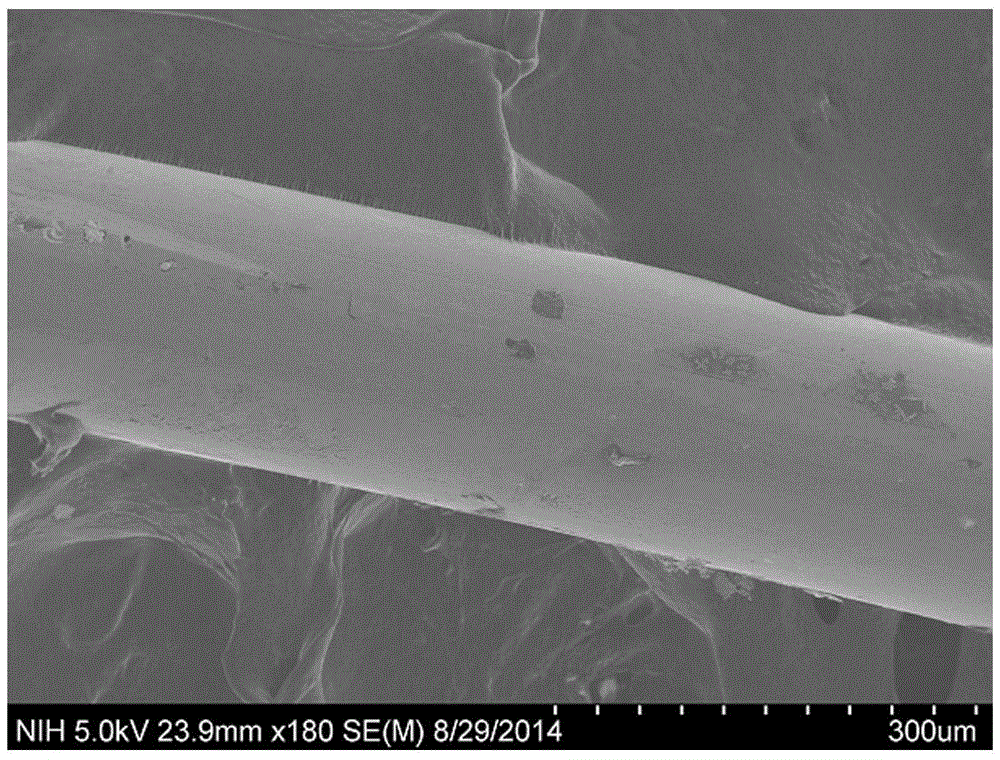Nanogold film memory alloy esophageal stent and preparing method thereof
A technology of memory alloy and nano-gold, which is applied in the field of medical devices to achieve the effects of high thermal efficiency, material safety, and simple and fast coating process
- Summary
- Abstract
- Description
- Claims
- Application Information
AI Technical Summary
Problems solved by technology
Method used
Image
Examples
preparation example Construction
[0036] A method for preparing a nano-gold film memory alloy esophageal stent with photothermal therapy function as described above, the steps are as follows:
[0037] Firstly, after cleaning the surface of the nickel-titanium alloy stent, immerse it in acetone solution and shake it for 24 hours; then take out the stent and immerse it in Tris-Buffer (pH=9), shake it for 5 hours, add 800 mg of dopamine; keep shaking, and react After 2 days; take out the stent again, immerse it in Tris-Buffer (pH=9) again, slowly add 500-900mg dopamine, and continue the reaction for 2 days; take out the alloy stent, wash it with deionized water for 3 times, and immerse it in ethylene glycol solution, then add 200-400mg of chloroplatinic acid, and shake for 5 hours; then place it in an oil bath and heat it to 100-110°C; after reacting for 3 hours, take out the bracket and wash it repeatedly with deionized water three times; then put the alloy The scaffold was immersed in deionized water, 300-600 m...
Embodiment 1
[0041] Specific steps for preparing a nano-gold film with a thickness of 5 nm: firstly, the surface of the nickel-titanium alloy stent is cleaned, immersed in an acetone solution, and shaken for 24 hours. Then take out the stent and re-immerse in Tris-Buffer (pH=9), shake and wash for 5 hours, add 800 mg of dopamine, keep shaking, after 2 days of reaction, take out the stent again, and immerse in Tris-Buffer (pH=9) again, Slowly add 900mg of dopamine, and continue to react for 2 days. The alloy stent was taken out, washed three times with deionized water, immersed in ethylene glycol solution, then added with 300 mg of chloroplatinic acid, and shaken for 5 hours. Then place it in an oil bath and heat to 100°C. After 3 hours of reaction, the scaffolds were taken out and washed three times repeatedly with deionized water. Then immerse the alloy stent in deionized water, add 300 mg of hydroxylamine, and stir for 20 minutes. Subsequently, 20 mL of 10 mg / mL chloroauric acid trihy...
Embodiment 2
[0043] Specific steps for preparing a nano-gold film with a thickness of 10 nm: firstly, the surface of the nickel-titanium alloy stent is cleaned, immersed in an acetone solution, and shaken for 24 hours. Then the scaffold was taken out and submerged again in Tris-Buffer (pH=9), shaken and washed for 5 hours, and 800 mg of dopamine was added. Keep shaking and let it react for 2 days. The stent was taken out again, submerged in Tris-Buffer (pH=9) again, 900 mg of dopamine was slowly added, and the reaction was continued for 2 days. The alloy stent was taken out, washed three times with deionized water, immersed in ethylene glycol solution, then added with 400 mg of chloroplatinic acid, and shaken for 5 hours. Then place it in an oil bath and heat to 100°C. After 3 hours of reaction, the scaffolds were taken out and washed three times repeatedly with deionized water. Then immerse the alloy stent in deionized water, add 300 mg of hydroxylamine, and stir for 20 minutes. Subse...
PUM
| Property | Measurement | Unit |
|---|---|---|
| thickness | aaaaa | aaaaa |
Abstract
Description
Claims
Application Information
 Login to View More
Login to View More - R&D
- Intellectual Property
- Life Sciences
- Materials
- Tech Scout
- Unparalleled Data Quality
- Higher Quality Content
- 60% Fewer Hallucinations
Browse by: Latest US Patents, China's latest patents, Technical Efficacy Thesaurus, Application Domain, Technology Topic, Popular Technical Reports.
© 2025 PatSnap. All rights reserved.Legal|Privacy policy|Modern Slavery Act Transparency Statement|Sitemap|About US| Contact US: help@patsnap.com



